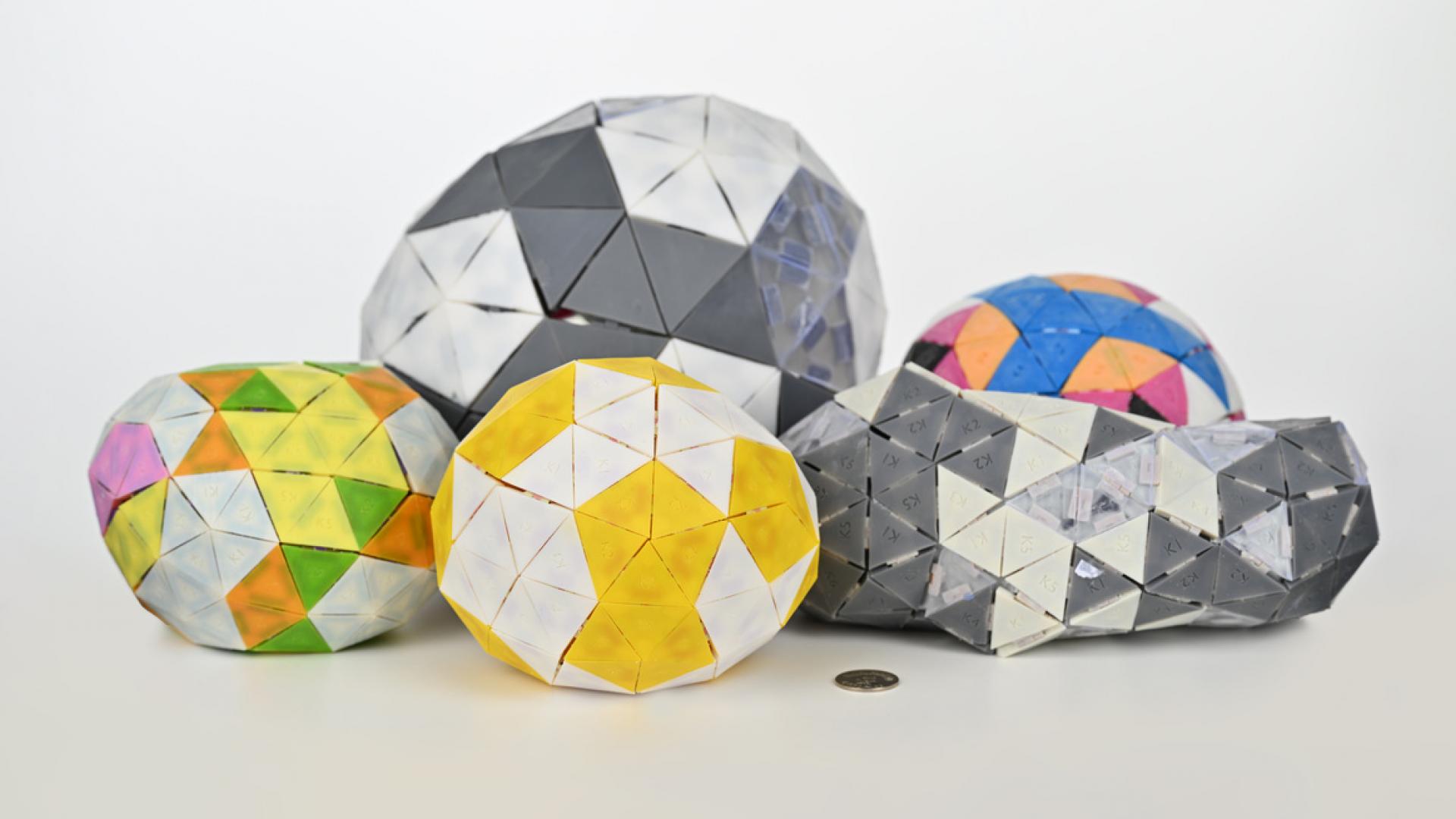Science has a long history of using physical models to explore and explain the mysteries of biology. KAUST researchers have now developed a computer algorithm that calculates how to build 3D models of cells, viruses and other biological structures using interconnecting triangular pieces.[1]
The algorithm is called Dr. KID — an acronym of the mathematical approach known as K-set isometric decomposition, at the heart of the system. The researchers hope that scientists will use Dr. KID to quickly and cheaply build models for teaching or outreach activities, or to stimulate thinking around research problems. “The physical models created by Dr. KID can be used in educational institutes, scientific museums, awareness seminars and research conferences,” says Dawar Khan, a member of the KAUST team.
The biological structures that Dr. KID models are typically round and lumpy, shaped rather like potatoes. The algorithm starts by creating a map of the surface of a structure, based on scientific data, and covering it in a network of tessellated triangles. The team then uses 3D printing to turn these triangles into physical objects, which feature connectors and holes so they can be joined together. The triangles act as pieces in a puzzle, which users can build into a complete structure. “It provides a fun learning experience when assembling the entire model,” says team member Ciril Bohak.
In general, printing lots of triangles with different shapes would lead to very high production costs. To avoid this, Dr. KID categorizes the triangles into groups, based on how similar they are to one another. Then the algorithm goes through iterations of reshaping the triangles until all of the triangles within each group are identical. This ultimately reduces the number of different types of triangles needed to produce the model.
It also means that each puzzle piece can potentially be used as a building block in many different structures. “Designing identical pieces reduces costs by increasing reusability of the pieces,” says Ivan Viola, who led the team. To showcase its capabilities, the researchers used Dr. KID to create pieces for models of several biological structures, including SARS-CoV-2 virus particles, a cell nucleus and a mitochondrion.
Isometric decomposition is widely used in computational design, and the researchers think that Dr. KID could be extended to a variety of applications. “Our idea of decomposing a surface into identical segments can be applied to other fields including architectural geometry, fabrication and civil engineering,” says Viola. The researchers are now refining Dr. KID to handle more complex shapes and to use curved triangular puzzle pieces.
REFERENCE
- Khan, D., Bohak, C. & Viola, I. Dr Kid: Direct remeshing and K-set isometric decomposition for scalable physicalization of organic shapes. (IEEE VIS2023 Honorable mention), IEEE Transactions on Visualization and Computer Graphics, (2023).| article.

